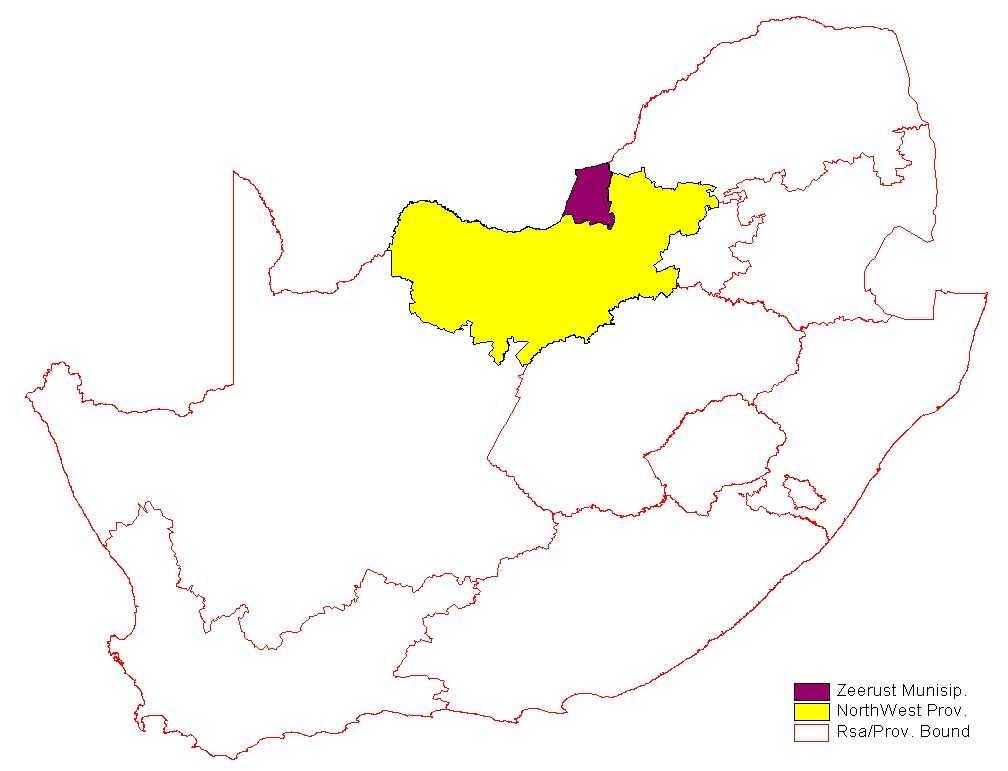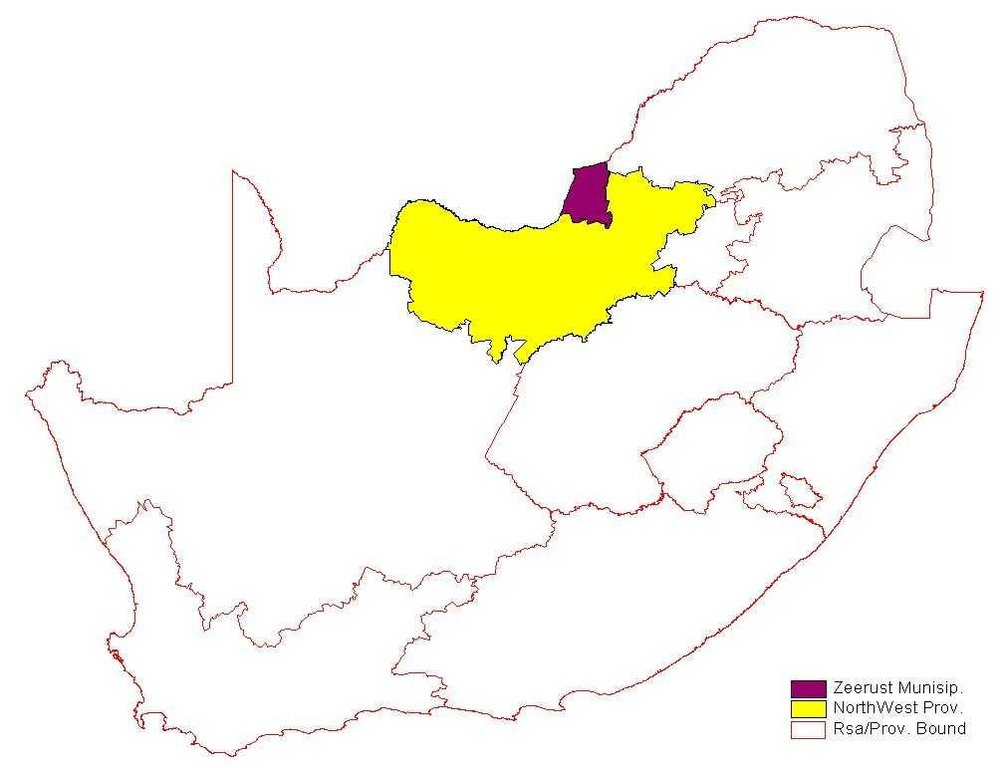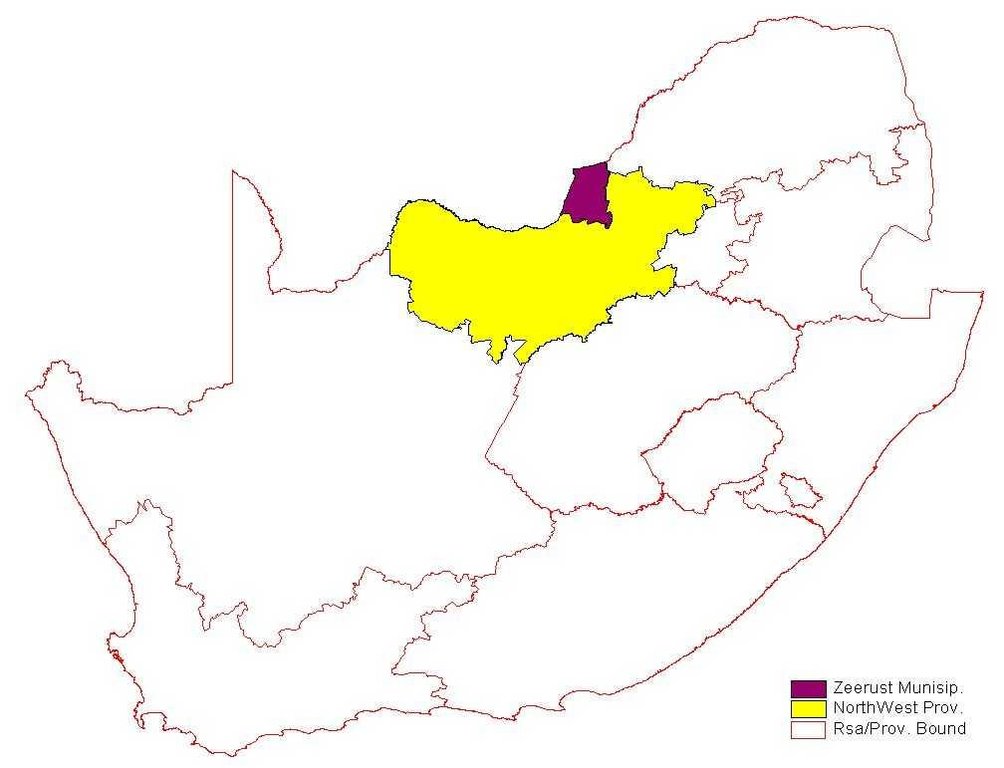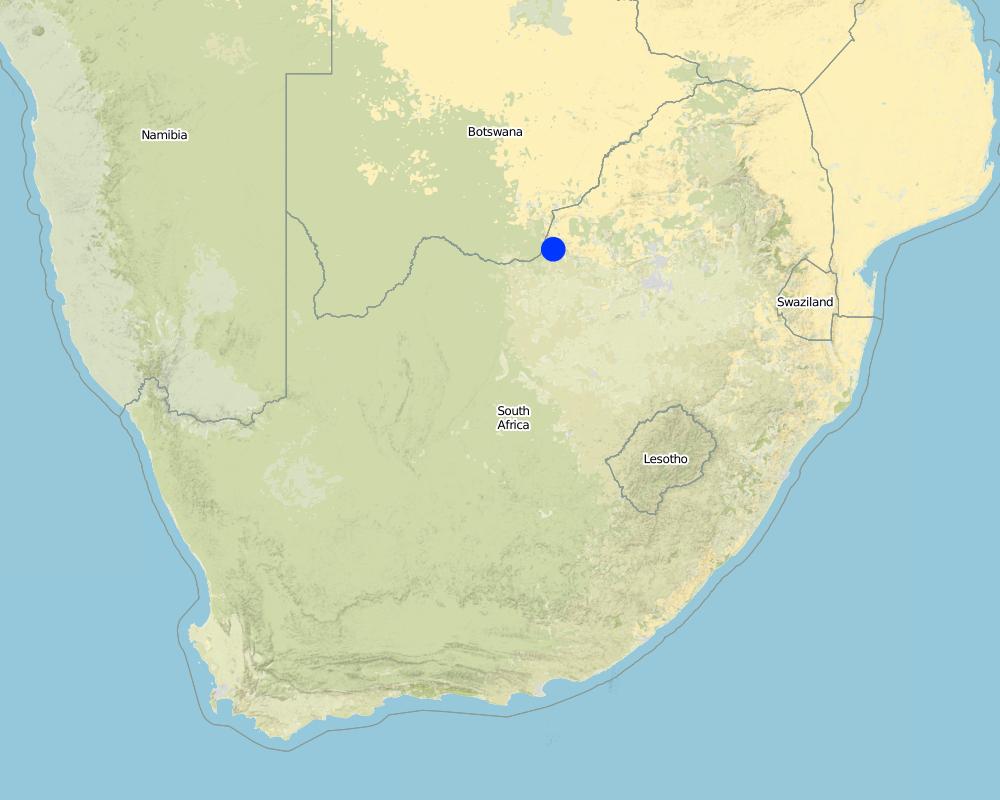Land user participation with research [South Africa]
- Creation:
- Update:
- Compiler: Klaus Kellner
- Editor: –
- Reviewer: Fabian Ottiger
approaches_2342 - South Africa
View sections
Expand all Collapse all1. General information
1.2 Contact details of resource persons and institutions involved in the assessment and documentation of the Approach
Name of the institution(s) which facilitated the documentation/ evaluation of the Approach (if relevant)
Potchefstroom Universiteit vir CHO (Potchefstroom Universiteit vir CHO) - South Africa1.3 Conditions regarding the use of data documented through WOCAT
The compiler and key resource person(s) accept the conditions regarding the use of data documented through WOCAT:
Yes
1.4 Reference(s) to Questionnaire(s) on SLM Technologies
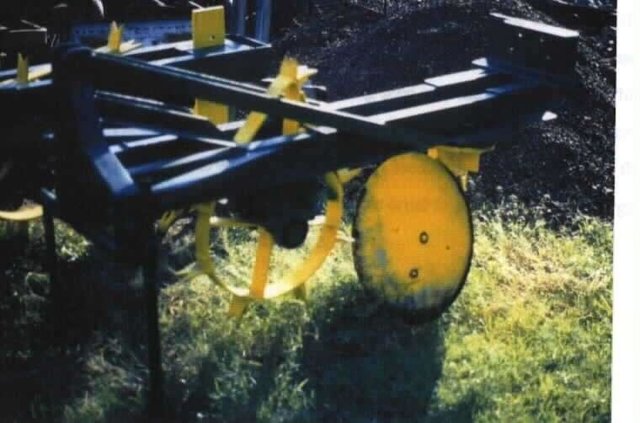
Agronomic & vegetative rehabilitation [South Africa]
Combinations; cultivation & vegetative
- Compiler: Klaus Kellner
2. Description of the SLM Approach
2.1 Short description of the Approach
Land user participation with researchers to improve existing and develop new technologies
2.2 Detailed description of the Approach
Detailed description of the Approach:
Aims / objectives: Land users implemented the technology but the success was never evaluated. Contacted researcher who quantitatively assessed the technology. The pros and cons of the technology were discussed with the land user and other farmers in the area. All gave comments and shared experiences of how these technologies can be improved. Adjustments were made and on an experimental and demonstrative way, the adjustments were implemented and evaluated.
2.3 Photos of the Approach
2.5 Country/ region/ locations where the Approach has been applied
Country:
South Africa
Region/ State/ Province:
North West Province
Map
×2.6 Dates of initiation and termination of the Approach
Indicate year of initiation:
1989
Year of termination (if Approach is no longer applied):
2001
2.7 Type of Approach
- project/ programme based
2.8 Main aims/ objectives of the Approach
The Approach focused on SLM only
Radical veld improvement. Better grazing land. Understand degradation - causes and how to control it. Convey knowledge about restoration technologies to as many land users as possible
The SLM Approach addressed the following problems: Degrade & denuded rangeland Low production of grazing land
2.9 Conditions enabling or hindering implementation of the Technology/ Technologies applied under the Approach
availability/ access to financial resources and services
- hindering
Low cost/benefit ratio in the short term
Treatment through the SLM Approach: Proper advice to land user about advantages in the long term
legal framework (land tenure, land and water use rights)
- enabling
The existing land ownership, land use rights / water rights helped a little the approach implementation: hinder: low Privately owned commercial farms
knowledge about SLM, access to technical support
- hindering
No knowledge
Treatment through the SLM Approach: Awareness & technical support by agriculturists & scientists
3. Participation and roles of stakeholders involved
3.1 Stakeholders involved in the Approach and their roles
- local land users/ local communities
Farmers association: Mainly white.
Only men own the land. Commercially owned & managed land
- SLM specialists/ agricultural advisers
- national government (planners, decision-makers)
Department Agriculture & Resource conservation
- international organization
If several stakeholders were involved, indicate lead agency:
Land uses together with specialists
3.2 Involvement of local land users/ local communities in the different phases of the Approach
| Involvement of local land users/ local communities | Specify who was involved and describe activities | |
|---|---|---|
| initiation/ motivation | interactive | Mainly:public meetings; partly: rapid/participatory rural appraisal; Land users approached researcher/scientist for help |
| planning | interactive | Mainly: public meetings; partly: workshops/seminars; What & how to implement technology |
| implementation | interactive | responsibility for major steps; Did apply the technology on their own land |
| monitoring/ evaluation | interactive | measurements/observations; By scientist & students primarily but also with land users who helped |
| Research | interactive | on-farm; On the farmers/land users owned land |
3.4 Decision-making on the selection of SLM Technology/ Technologies
Specify who decided on the selection of the Technology/ Technologies to be implemented:
- mainly land users, supported by SLM specialists
Explain:
land user driven (bottom-up). That technology be evaluated & improved
Decisions on the method of implementing the SLM Technology were made by mainly by land users supported by SLM specialists. consultative. Scientist & technician, land user
4. Technical support, capacity building, and knowledge management
4.1 Capacity building/ training
Was training provided to land users/ other stakeholders?
Yes
Specify who was trained:
- land users
- extensionists/trainers
Form of training:
- farmer-to-farmer
- demonstration areas
Subjects covered:
Land users approached researcher/scientist for help on degradation; natural resources, utilisation & conservation, restoration, reclamation technologies
4.2 Advisory service
Do land users have access to an advisory service?
Yes
Specify whether advisory service is provided:
- on land users' fields
Describe/ comments:
Learning by doing & seeing is believing; Key elements: Demonstration, On site/farm, Participation; 1) Mainly: government's existing extension system, Partly: projects own extension structure and agent Extension staff: mainly government employees 3) Target groups for extension: land users, technicians/SWC specialists; Activities: Demonstration - participation
Advisory service is quite adequate to ensure the continuation of land conservation activities; Knowledge gained & understood
4.3 Institution strengthening (organizational development)
Have institutions been established or strengthened through the Approach?
- yes, moderately
Specify the level(s) at which institutions have been strengthened or established:
- local
Specify type of support:
- capacity building/ training
4.4 Monitoring and evaluation
Is monitoring and evaluation part of the Approach?
Yes
Comments:
technical aspects were regular monitored through measurements
area treated aspects were regular monitored through measurements
no. of land users involved aspects were regular monitored through measurements;
There were few changes in the Approach as a result of monitoring and evaluation: First - demonstration & awareness Second - implementation & training
4.5 Research
Was research part of the Approach?
Yes
Specify topics:
- ecology
Give further details and indicate who did the research:
Research for better or adjustment of existing reclamation technologies - based in ecology
Research was carried out on-farm
5. Financing and external material support
5.1 Annual budget for the SLM component of the Approach
If precise annual budget is not known, indicate range:
- 2,000-10,000
Comments (e.g. main sources of funding/ major donors):
Approach costs were met by the following donors: local community / land user(s) (-): 40.0%; government (national): 40.0%; other (University): 20.0%
5.2 Financial/ material support provided to land users
Did land users receive financial/ material support for implementing the Technology/ Technologies?
Yes
5.3 Subsidies for specific inputs (including labour)
- agricultural
| Specify which inputs were subsidised | To which extent | Specify subsidies |
|---|---|---|
| seeds | partly financed | |
If labour by land users was a substantial input, was it:
- voluntary
Comments:
By land owner
5.4 Credit
Was credit provided under the Approach for SLM activities?
No
6. Impact analysis and concluding statements
6.1 Impacts of the Approach
Did the Approach help land users to implement and maintain SLM Technologies?
- No
- Yes, little
- Yes, moderately
- Yes, greatly
Oversowing, cultivation, erosion & bush encroachment control
N/A
Did other land users / projects adopt the Approach?
- No
- Yes, little
- Yes, moderately
- Yes, greatly
Results - to many other districts & land users by workshops, presentations at conferences, collaborations etc.
6.3 Sustainability of Approach activities
Can the land users sustain what has been implemented through the Approach (without external support)?
- yes
If yes, describe how:
Depending that guidelines about e.g. soil type, oversowing, bush encroachment eradication, cultivation technology etc. is applied correctly
6.4 Strengths/ advantages of the Approach
| Strengths/ advantages/ opportunities in the land user’s view |
|---|
| Learning by doing |
| Strengths/ advantages/ opportunities in the compiler’s or other key resource person’s view |
|---|
| On farm (How to sustain/ enhance this strength: Encouragement by researchers & technicians/extension) |
| Participation by land owners (How to sustain/ enhance this strength: Follow-up meetings & evaluation) |
| Farmer to farmer. Farmer to scientist. Scientist to farmer. Scientist to extension - farmer (How to sustain/ enhance this strength: Communication; on going support and show interest, continued evaluation & feed back) |
6.5 Weaknesses/ disadvantages of the Approach and ways of overcoming them
| Weaknesses/ disadvantages/ risks in the land user’s view | How can they be overcome? |
|---|---|
| Too little communication between researchers, farmers & extension | Better participation & interest by all |
| Weaknesses/ disadvantages/ risks in the compiler’s or other key resource person’s view | How can they be overcome? |
|---|---|
| Not as many farmers involved as would have liked | |
| Farmers are scared to leave their farms & families alone to go to meetings & workshops, especially at night |
7. References and links
7.1 Methods/ sources of information
- field visits, field surveys
- interviews with land users
Links and modules
Expand all Collapse allLinks

Agronomic & vegetative rehabilitation [South Africa]
Combinations; cultivation & vegetative
- Compiler: Klaus Kellner
Modules
No modules


